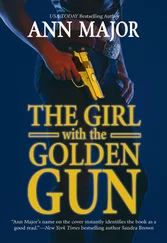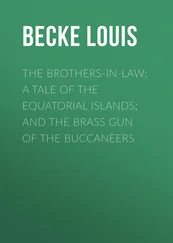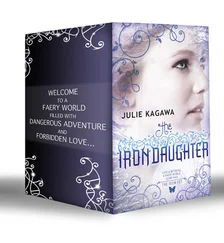Marino’s wounds were serious, but Sweet knew things could have been so much worse. At least no one had been killed. But just to make sure everyone else was indeed all right, the faculty at Atlantic Shores gathered staff and students together in the church auditorium to conduct a head count. Many students still had not realized a shooting had occurred, including Will and Lora Farley, whose mother, Karen, was the school’s business teacher.
“I was like wondering where my mom was,” Lora recalled a long while later as she sat facing a courtroom that had suddenly gone dead quiet. “We weren’t really concerned or anything, but when I first entered the auditorium, this girl said to me—me and my friends were laughing and stuff because we didn’t really think anything was going on—and this girl said to me, ‘Someone has been shot,’ but it wasn’t my mom. It was another teacher, and I was like—I couldn’t understand. I was like, ‘Somebody has been shot at school?’
“We prayed and stuff that everything would be all right, and then we just like left it up to the Lord. We just sat there really being quiet and stuff. I asked Will—I said, ‘Have you seen Mom?’
“And he said, ‘No.’”
CHAPTER TWELVE
THE CULTURE
NICHOLAS ELLIOT HAD COME TO SCHOOL that Friday prepared for combat. He had filled his backpack with his gun, hundreds of rounds of ammunition, and a variety of battle accessories. The most striking thing about his cargo, however, was not the inherent firepower—although it was prodigious—but rather the weapons savvy evident in what this sixteen-year-old boy had done to the gun and its ammunition in an apparent effort to make them even more efficient at killing.
He did not carry his six clips haphazardly, but had “jungle-clipped” them using tape to bind them in pairs in such a way that the instant he expended one clip he could simply turn the pair over and jam in the other end. Each assembly was capable of providing him with sixty-four rounds of virtually continuous fire, which, barring jams, he could have pumped from the gun at a rate approaching that of a light machine gun. He had used a length of rope to fashion a combat sling for his Cobray similar in concept to slings attached to the compact Uzis and Heckler & Koch submachine guns used by antiterrorist squads to help them better control their weapons during combat. He carried a crude silencer made from a pipe wrapped in fabric, and a “brass catcher” he had made from cloth and tape, to be attached to his gun to catch ejected cartridge cases. “A gun enthusiast might use a brass catcher to catch the brass for reloading,” said Donald Adams, the Virginia Beach homicide detective. “A murderer or a person about to commit a crime might use one to collect the evidence.”
His six clips gave him a total of 192 cartridges ready to fire, but he came prepared for the possibility that he might use up all those rounds and need more. He carried hundreds of extra cartridges, including several boxes containing thirty-two rounds each—exactly enough to refill an expended clip. To speed refilling, Nicholas had inserted a thin, white string through the base of each magazine to produce a primitive speed loader. When tugged, Adams told me, the string would pull down the spring-driven feeder inside the magazine, thus easing the resistance. “He could hold the string down by clamping it under his foot,” Adams explained. Nicholas could then insert each cartridge into the magazine more quickly and with less strain. Adams could not at first figure out what kind of string Nicholas had used. It was thicker than fishing line and very strong. After a while he decided he knew what it was: dental floss.
Finally, Nicholas modified even the bullets themselves. He filed a groove into the tip of at least one bullet apparently in the hopes of turning it into what Adams called a “dumdum,” a bullet that breaks apart on impact, thereby in theory becoming considerably more deadly. Nicholas modified other bullets by drilling from the tip downward to form “hollow points.” On impact, hollow-point bullets spread into lethal mushrooms that produce bigger holes and more potent neural disruption than solid rounds. Commercially made hollow-points are the bullets of choice among law-enforcement officers because they produce a lot of damage in the human body but are less likely than solid-point bullets to pass through the intended target and endanger someone else.
“This guy,” Adams said, “was ready for war.”
Adams knew where Nicholas got the bullets. The fact his mother bought them was troubling enough. But where does a sixteen-year-old boy learn to modify bullets? Where does he learn to devise combat slings, silencers, and even brass catchers?
No one can know exactly how he learned it all because Nicholas won’t say. But the fact that a child can acquire so much lethal knowledge should surprise no one who is acquainted with America’s gun culture and the manufacturers, marketers, writers, and others in the so-called gun aftermarket who make knowledge about how to succeed at murder so readily available to anyone willing to thumb to the back of a gun magazine or take a weekend stroll through the nearest gun show.
♦ ♦ ♦
Homicide, or rather the homicide fantasy, is the engine that drives America’s fascination with guns. Target shooters spend hour after hour firing into human silhouettes. Practical shooting competitions held nationwide test civilian competitors’ ability to hit targets after leaping from a car. Occasionally such meets conclude in an explosive finale, with entrants firing away at a distant target consisting of dynamite and a gasoline-filled barrel. In this milieu, guns used in grisly crimes actually wind up gaining popularity. After the assassination of John F. Kennedy, sales of the otherwise undistinguished Mannlicher-Carcano rifle used by Lee Harvey Oswald soared. Hundreds “were immediately bought by souvenir-seekers who wanted to get the feel of the weapon that had brought down the president,” wrote Robert Sherrill in The Saturday Night Special Even the murder of schoolchildren boosts sales. After Patrick Edward Purdy opened fire on a schoolyard in Stockton with his AKS, a semiautomatic version of the now-infamous AK-47, sales of the gun and its knockoffs boomed. Prices quadrupled, to $1,500. Guns Unlimited felt the surge in demand. “I didn’t sell an AK until Stockton in California; then everybody wanted one,” said James S. Dick, the owner of Guns Unlimited, in a deposition.
A New York Times reporter once asked the marketing director at Intratec, a Miami company that makes an assault pistol similar in spirit to the Cobray, how he felt about the widespread condemnation of his company’s weapons. Like the Cobray, the TEC 9 is a handgun of “dirty” design, meant to evoke a submachine gun. It has a perforated barrel sheath, akin to those that appear on full-scale machine guns. “I’m kind of flattered,” he replied. “It just has that advertising tingle to it. Hey, it’s talked about, it’s read about, the media write about it. That generates more sales for me. It might sound cold and cruel, but I’m sales oriented.”
Intratec was so oriented to sales that when California banned assault weapons and included the Intratec 9 on the list, Intratec sidestepped the law through the simple maneuver of changing the gun’s name to TEC-DC-9. Gian Luigi Ferri bought two in Las Vegas and, on July 1, 1993, took them to the thirty-fourth floor of a gleaming San Francisco office building. He killed eight people, wounded six, then shot himself to death. Like Nicholas, indeed, like so many of our very many spree shooters, he carried an excessive amount of ammunition, some six hundred rounds. He had acquired the guns legally. “Everything was by the book,” said a Las Vegas police officer.
Читать дальше
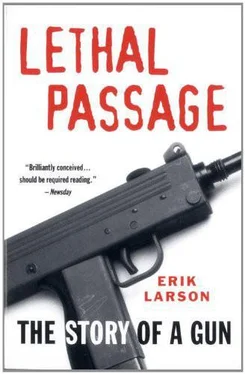
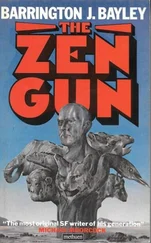
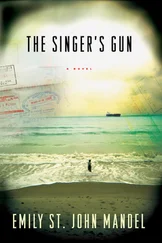

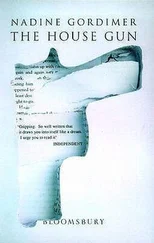

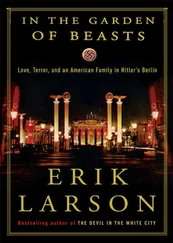

![Ричард Деминг - Whistle Past the Graveyard [= Give the Girl a Gun]](/books/412176/richard-deming-whistle-past-the-graveyard-give-t-thumb.webp)
